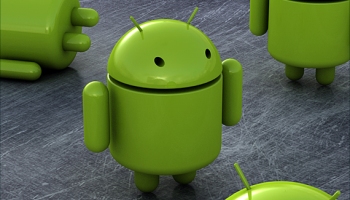Android Tightens Smartphone Grip Despite iPhone 4S

The arrival of the iPhone 4S has done little to dent Android’s smartphone market strangehold
The Android operating system continues to hold off Apple’s iOS, after Google’s offering rose to 46.3 percent market share through October, up from 44.8 percent through September, according to comScore.
Apple’s iOS platform rose to 28.1 percent share for the month from 27.4 percent in September. Apple’s share may have been the beneficiary of offering the new iPhone 4S in several countries starting 14 October.
Others Decline
Meanwhile Research In Motion laid claim to 17.2 percent share for October, down from 18.9 percent in September and from 19.7 percent in August. The Canadian phone maker’s new BlackBerry Bold 9900/9930 smartphones failed to cease its slide in the market.
 RIM also suffered a major outage in October, which left BlackBerry smartphone users without data for days. RIM is banking on a significant shift to so-called superphones based on its QNX tablet operating system in 2012.
RIM also suffered a major outage in October, which left BlackBerry smartphone users without data for days. RIM is banking on a significant shift to so-called superphones based on its QNX tablet operating system in 2012.
Microsoft can’t stop its smartphone platform market share slide either despite touting its fresh “Mango” operating system build.
The company’s Windows Mobile/Phone 7 share dipped to 5.4 percent for October, down from 5.6 percent in September and 5.8 percent in August. Windows Phones from HTC and Samsung have failed to gain much traction. Microsoft hopes its Nokia Lumia phones and subsequent models shake its share from the doldrums.
Widely Available
Android’s success can be attributed to many factors, the most salient of which is the fact that there are hundreds of Android handsets flooding the market worldwide.
Huawei and ZTE sell Android phones for as low as $20 in China. Carriers Verizon Wireless, AT&T, Sprint and T-Mobile subsidize Android 2.3 Gingerbread phones in the United States, selling premium models for as low as $80 (£51) on contract.